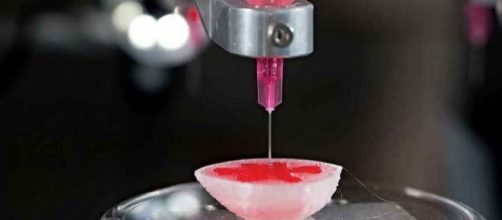Since 3D Printing was invented it has been speculated that it could have a variety of uses in multiple areas, including in the medical field. With each passing year it seems that more and more breakthroughs and uses for this exciting new technology are being discovered. Now, collaboration between Scientists at the Chalmers University of Technology in Sweden and Sahlgrenska Academy in Belgium has lead to one of these breakthroughs. Their research has been published in the latest edition of the scientific mega journal 'Scientific Reports.'
3D printing human cartilage
The scientists researching the 3D printing technology, announced that they have successfully 3D-printed Stem Cells that multiplied and then separated into a material very similar to human cartilage tissue.
That fact the that stem cells survived the ordeal of the printing process is also being celebrated as a breakthrough by scientists. This was also successfully undertaken using a brand new process for making cartilage.
The scientists started by using cartilage cells that were taken from patients who had undergone knee surgery. These cartilage cells were then manipulated so that they reverted back to being stem cells. They were then encased inside cellulose material. Next, they were then printed using a 3D bio-printer and managed to survive. Once that was over, the stem cells were given growth stimulants. These stimulants caused them to multiply and separate, transforming them into the cartilage.
The only negative to this story is that the cellulose material used may not be well-suited for humans. Scientists say the next step is to find a material that can be broken down and absorbed safely by the human body. They did say that further testing of this method would require a lot of live stem cells.
Other medical breakthroughs in 3D printing
This latest breakthrough with 3D printing technology in the medical field is just the latest. Back in 2013 scientists at Cornell University grew human ears from cow cells using a 3D printer. That same year, scientists at Princeton University said that the 3D printed ears they made could hear frequencies outside the range that a human could.
In 2015, doctors were able to use 3D printing to give a teenager from the Marshall Islands a new nose after he was severely burned years before. This is just one of the ways that 3D printing could make more strides in terms of helping with burn treatment and facial reconstructive surgery.


